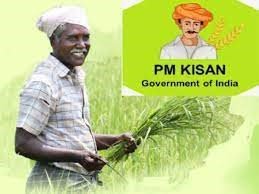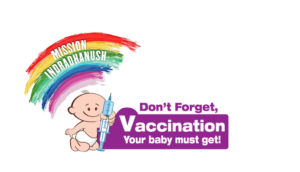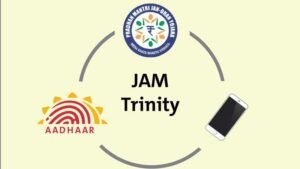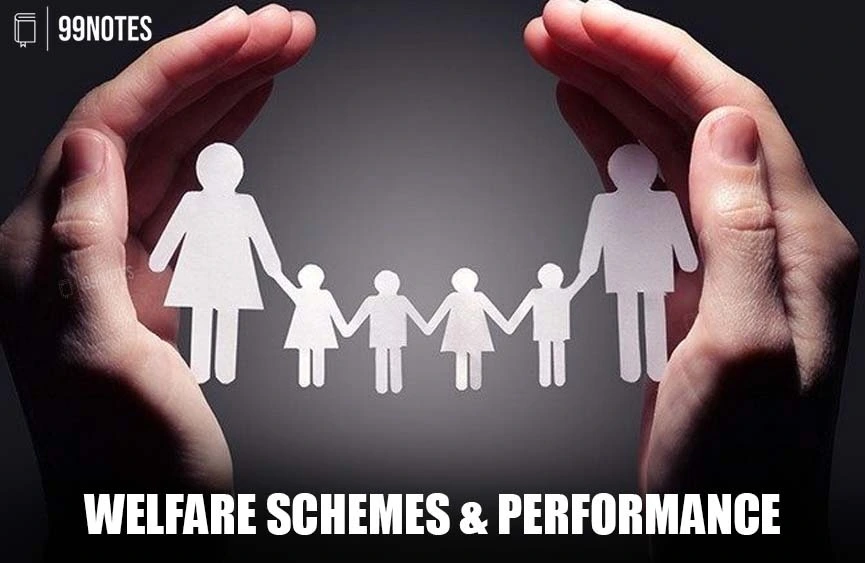WELFARE SCHEMES & PERFORMANCE
 Welfare schemes are government programmes aimed at addressing socio-economic challenges faced by vulnerable sections. These schemes include subsidies, entitlements, pensions, and public services, designed to alleviate poverty, promote empowerment, and ensure equitable access to opportunities. Examples include MGNREGA, PMAY, Ayushman Bharat, and Poshan Abhiyaan, which collectively address multidimensional aspects of deprivation.
Welfare schemes are government programmes aimed at addressing socio-economic challenges faced by vulnerable sections. These schemes include subsidies, entitlements, pensions, and public services, designed to alleviate poverty, promote empowerment, and ensure equitable access to opportunities. Examples include MGNREGA, PMAY, Ayushman Bharat, and Poshan Abhiyaan, which collectively address multidimensional aspects of deprivation.
Over the years, there has been a shift from entitlement-based approaches to empowerment-oriented models using digital governance, JAM trinity (Jan Dhan, Aadhaar, Mobile), and Direct Benefit Transfers (DBT). While the welfare state remains essential in a country with high poverty and inequality, reforms are needed in targeting, transparency, and accountability to enhance the effectiveness and long-term impact of welfare schemes.
Constitutional Mandate for Welfare
The Indian Constitution envisions a welfare state that guarantees social, economic, and political justice to all citizens. This vision is reflected in the Fundamental Rights (FRs) and Directive Principles of State Policy (DPSPs), which together lay the legal and moral foundation for various welfare initiatives. While FRs are enforceable by law, DPSPs act as guiding principles for the state to ensure social and economic well-being.
Fundamental Rights (FR)
• Article 14: Ensures equality before law and equal protection of laws, forming the basis of non-discriminatory welfare distribution.
• Article 15: Prohibits discrimination and empowers the state to make special provisions for weaker sections including women and SC/STs.
• Article 16: Guarantees equal opportunity in public employment, supporting affirmative action.
• Article 21: Protects the right to life and personal liberty, interpreted to include rights to health, shelter, and livelihood.
• Article 21A: Mandates free and compulsory education for children aged 6–14, a key element of human development.
Directive Principles of State Policy (DPSP)
• Article 38: Directs the state to promote the welfare of the people and reduce inequalities in income and status.
• Article 39: Calls for policies that secure right to adequate means of livelihood, equal pay for equal work, and prevent concentration of wealth.
• Article 41: Obliges the state to provide public assistance in cases of unemployment, old age, and disability.
• Article 42: Ensures just and humane conditions of work and maternity relief.
• Article 43: Advocates living wages and decent working conditions for workers.
• Article 47: Directs the state to improve nutrition levels and public health.
Together, FRs and DPSPs provide a constitutional framework that mandates the Indian state to pursue the goal of a just and inclusive society. These provisions ensure that welfare is not a matter of charity, but a constitutional duty aimed at empowering citizens and bridging socio-economic divides.
Types of Welfare Schemes
In India, welfare schemes are classified into multiple categories based on funding mechanisms, target groups, and legal nature. These classifications are crucial to understand policy design, implementation challenges, and governance strategies aimed at inclusive development.
- Centrally Sponsored Schemes (CSS): These are schemes where the central government provides a major share of the funds, while states contribute the remaining portion. They are implemented by state governments as per centrally prescribed guidelines. Examples include Swachh Bharat Mission (SBM), Pradhan Mantri Awas Yojana-Gramin (PMAY-G), and National Health Mission (NHM). These schemes ensure uniformity while allowing flexibility to states.
 Central Sector Schemes: Fully funded and implemented by the central government, these schemes are designed for national-level priorities and are executed directly through central ministries or their agencies. Examples include PM-KISAN, Digital India, and Make in India. They ensure faster execution and better control over outcomes by the Union government.
Central Sector Schemes: Fully funded and implemented by the central government, these schemes are designed for national-level priorities and are executed directly through central ministries or their agencies. Examples include PM-KISAN, Digital India, and Make in India. They ensure faster execution and better control over outcomes by the Union government.- Universal Schemes: These schemes are designed to cover the entire population, irrespective of income or social group, to ensure access to essential services. They aim to provide basic entitlements like food, education, and health. Examples include the Mid-Day Meal Scheme, Public Distribution System (PDS), and Polio Immunization. Universal coverage fosters equity but often faces implementation inefficiencies.
- Targeted Schemes: These focus on specific vulnerable sections of the society such as Below Poverty Line (BPL) families, Scheduled Castes, Scheduled Tribes, minorities, women, or differently-abled. Examples include Ujjwala Yojana for poor women, National Social Assistance Programme (NSAP), and Stand-Up India. Targeted schemes improve efficiency and impact but require accurate identification of beneficiaries.
- Rights-Based Schemes: These are backed by legal guarantees that make them enforceable by citizens through judicial means if denied. They treat welfare as a right, not a charity, thus ensuring stronger accountability. Examples include Mahatma Gandhi National Rural Employment Guarantee Act (MGNREGA), Right to Education (RTE), and National Food Security Act (NFSA). They promote democratic participation and transparency in delivery.
- Discretionary Schemes: These schemes are designed and launched as per the discretion of the executive, often without any legal backing or citizen entitlement. Their implementation depends on political will and available fiscal space. Examples include Aspirational Districts Programme and Gati Shakti. While they offer innovation and flexibility, their sustainability and accountability are often limited.
These categories reflect the complex nature of welfare governance in India, requiring a balance between universalism and targeting, central control and state autonomy, and legal enforceability versus administrative flexibility.
Major Welfare Schemes by Sector
Welfare schemes in India are sector-specific interventions aimed at addressing socio-economic vulnerabilities through targeted support. They play a pivotal role in ensuring inclusive growth, human development, and social justice. Key sectors like poverty alleviation, health, and education have seen landmark schemes that not only address immediate needs but also build long-term resilience in communities.
1. Poverty Alleviation
• MGNREGA (Mahatma Gandhi National Rural Employment Guarantee Act): Enacted in 2005, it legally guarantees 100 days of wage employment per year to every rural household whose adult members volunteer for unskilled manual work. It enhances livelihood security, promotes sustainable rural development, and empowers women through direct wage payments. MGNREGA has also helped in asset creation like roads, ponds, and irrigation canals while serving as a counter-cyclical measure during economic distress.
• PMGKY (Pradhan Mantri Garib Kalyan Yojana): Originally introduced in 2016 and expanded during COVID-19 in 2020, it provided economic relief to the poor through direct benefit transfers, free LPG, food grain support, and income support to farmers. Under PMGKY, over 80 crore people received free food grains, ₹500 was transferred to women Jan Dhan accounts, and provident fund contributions were made for formal sector workers. It acted as a crucial safety net during the pandemic.
2. Health
• Ayushman Bharat – PM Jan Arogya Yojana (PM-JAY): Launched in 2018, it provides health insurance coverage of ₹5 lakh per family per year for secondary and tertiary hospitalization to over 10 crore poor and vulnerable families. It aims to reduce out-of-pocket expenditure and improve access to quality healthcare. PM-JAY supports both public and empaneled private hospitals, promotes cashless and paperless treatment, and uses a robust IT platform for transparency and tracking.
 • Mission Indradhanush: Launched in 2014, this immunization programme targets full immunization coverage for children under two years and pregnant women. It covers diseases like diphtheria, polio, measles, hepatitis B, and TB. The Intensified Mission Indradhanush (IMI) focuses on hard-to-reach populations and districts with low immunization rates. It is critical to achieving India’s goal of universal child and maternal healthcare coverage.
• Mission Indradhanush: Launched in 2014, this immunization programme targets full immunization coverage for children under two years and pregnant women. It covers diseases like diphtheria, polio, measles, hepatitis B, and TB. The Intensified Mission Indradhanush (IMI) focuses on hard-to-reach populations and districts with low immunization rates. It is critical to achieving India’s goal of universal child and maternal healthcare coverage.
3. Education
• Samagra Shiksha Abhiyan: Introduced in 2018 by integrating SSA, RMSA, and Teacher Education schemes, it adopts a holistic approach to school education from pre-primary to Class XII. It focuses on quality education, gender equity, digital learning, infrastructure development, and teacher training. The scheme promotes inclusive education with special focus on educationally backward districts, tribal areas, and girl child education.
• Mid-Day Meal Scheme / PM POSHAN: Launched in 1995 and revamped as PM POSHAN, this scheme provides free cooked meals to students in government and government-aided primary and upper primary schools. It aims to improve nutritional levels of children, enhance school attendance, and reduce dropout rates. The scheme promotes social equity by encouraging children of different castes to eat together and generates employment for local cooks, especially women.
4. SC/ST/OBC/Minorities
• Post-Matric Scholarship Scheme: This centrally sponsored scheme provides financial assistance to students from SC, ST, OBC, and minority communities studying in Class XI to Ph.D. level. It covers tuition fees, maintenance allowance, and other incidental costs. The scheme aims to improve educational attainment among disadvantaged groups and reduce dropouts due to financial constraints.
• Stand-Up India Scheme: Launched in 2016, it facilitates bank loans ranging from ₹10 lakh to ₹1 crore to at least one SC or ST borrower and one woman borrower per bank branch for setting up a greenfield enterprise. The scheme promotes entrepreneurship among socially disadvantaged sections and facilitates access to capital and handholding support.
5. Senior Citizens, PwDs, and Transgender Persons
• National Social Assistance Programme (NSAP): This umbrella scheme provides social security to the elderly, widows, and persons with disabilities through direct pension support. It includes sub-schemes like IGNOAPS, IGNWPS, and IGNDPS and aims to ensure minimum basic income security for vulnerable sections without adequate means of livelihood.
• SMILE (Support for Marginalised Individuals for Livelihood and Enterprise): Launched in 2021, it focuses on the welfare of transgender persons and beggars. It includes skill development, education, medical care, and rehabilitation measures. The scheme empowers marginalized individuals with dignity, integration, and livelihood support through a multi-sectoral approach.
6. Labour Welfare & Informal Sector
• PM-SYM (Pradhan Mantri Shram Yogi Maandhan Yojana): A pension scheme for unorganised workers aged 18-40 with monthly income up to ₹15,000, offering ₹3,000 per month after 60 years. It is a voluntary and contributory scheme with a 50:50 contribution between beneficiary and government. It provides old age protection to millions of informal sector workers.
 • e-Shram Portal: Launched in 2021, this national database captures details of unorganised workers, including migrants, gig and platform workers. It helps in targeted delivery of welfare schemes, insurance, and future policy-making. Registered workers are covered under PMSBY (₹2 lakh accident insurance) and are eligible for social security benefits.
• e-Shram Portal: Launched in 2021, this national database captures details of unorganised workers, including migrants, gig and platform workers. It helps in targeted delivery of welfare schemes, insurance, and future policy-making. Registered workers are covered under PMSBY (₹2 lakh accident insurance) and are eligible for social security benefits.
These schemes reinforce the government’s commitment to inclusive development by addressing the specific vulnerabilities of different marginalized sections. They not only provide safety nets but also offer opportunities for dignity, self-reliance, and mainstream integration.
Implementation Mechanisms
Effective implementation of welfare schemes in India depends on a decentralized and coordinated framework involving multiple stakeholders. From central ministries to grassroots-level governance institutions, various mechanisms have been institutionalized to ensure last-mile delivery of services. Technological tools like DBT and JAM Trinity have significantly improved transparency and efficiency in service delivery.
• Role of Central Ministries: Nodal ministries such as Ministry of Rural Development, Health, Education, and Women & Child Development design policies, release funds, and monitor implementation. They provide guidelines, conduct evaluations, and ensure alignment with national goals and targets.
• Role of State Governments: States are key in customizing and executing schemes on the ground. They contribute to funding (in Centrally Sponsored Schemes), deploy personnel, and ensure convergence with state-level initiatives. They play a vital role in identifying beneficiaries, grievance redressal, and monitoring outcomes.
• Role of PRIs (Panchayati Raj Institutions): PRIs act as the grassroots interface for welfare schemes in rural areas. They help in awareness generation, beneficiary identification, scheme implementation, and social audits. Their involvement ensures democratic decentralization and local accountability.
• Direct Benefit Transfer (DBT): DBT ensures timely and transparent transfer of benefits (like subsidies, pensions, scholarships) directly into beneficiaries’ bank accounts. It reduces leakage, corruption, and delays, and improves efficiency by eliminating intermediaries.

• JAM Trinity (Jan Dhan–Aadhaar–Mobile): This backbone enables financial inclusion, digital authentication, and mobile-based delivery of services. It forms the core of DBT and e-governance, enhancing access, speed, and accuracy in welfare implementation.
• Common Services Centres (CSCs): These ICT-enabled kiosks in rural and remote areas offer access to e-governance services, welfare schemes, and digital literacy. CSCs bridge the digital divide and empower citizens to avail government schemes without travel or paperwork barriers.
Together, these mechanisms ensure that welfare schemes move beyond policy intent and translate into real, measurable impact for the most vulnerable, thereby strengthening the inclusive growth model of governance in India.
Monitoring & Evaluation
Effective monitoring and evaluation are essential to ensure that welfare schemes achieve their intended objectives, remain accountable, and continuously improve. By shifting from output-based to outcome-based metrics, and involving independent evaluations and global benchmarks, the government ensures data-driven governance and course correction.
- Output vs Outcome Monitoring: Output refers to immediate deliverables like number of houses built or students enrolled, whereas outcome reflects the real impact such as quality of life improvement or literacy rate. The focus has shifted from quantity to quality for assessing scheme performance.
- Third-Party Evaluations: Independent institutions, research bodies, and think tanks are engaged for unbiased evaluations. These help identify implementation gaps, measure impact objectively, and recommend policy corrections.
- School Education Quality Index (SEQI): Launched by NITI Aayog, SEQI evaluates the quality of school education across states based on learning outcomes, infrastructure, and equity. It promotes cooperative and competitive federalism by ranking states.
- Sustainable Development Goals (SDG) Index: The SDG India Index, also by NITI Aayog, maps the performance of states on global development indicators. Welfare schemes are aligned with SDG goals such as poverty reduction, health, and education.
- Real-Time Dashboards and MIS: Most flagship schemes use online dashboards and Management Information Systems to track beneficiaries, fund flow, and key metrics. It enables real-time governance, transparency, and data-backed decisions.
Robust monitoring and evaluation foster a culture of accountability, transparency, and evidence-based policymaking, ultimately enhancing the efficiency and equity of welfare delivery in India.
Challenges in Implementation
Despite the wide reach and good intentions behind welfare schemes, several ground-level challenges hamper their effectiveness. These issues range from poor targeting to leakages, and from bureaucratic delays to lack of awareness among beneficiaries, reducing the intended impact of public welfare spending.
- Identification and Targeting Issues: Due to errors in beneficiary databases like SECC or Aadhaar mismatch, many eligible citizens are excluded while ineligible ones may benefit. This affects the fairness and efficiency of scheme delivery.
- Leakages and Corruption: Although Direct Benefit Transfer (DBT) has reduced middlemen, in-kind schemes (like PDS or MDM) still face diversion of funds and corruption at various levels, especially in states with weak governance.
- Inter-Ministerial & Centre-State Coordination: Welfare schemes often involve multiple departments and levels of government, leading to overlap, blame-shifting, and delay in fund release or implementation due to poor coordination.
- Infrastructure and Capacity Constraints: Remote areas lack banking access, internet connectivity, health facilities, or trained personnel, which obstruct the delivery of services, especially in tribal or backward regions.
- Lack of Awareness & Grievance Redressal: Many intended beneficiaries are unaware of scheme benefits or eligibility criteria. Also, the absence of timely grievance redressal mechanisms erodes trust in public systems.
- One-Size-Fits-All Approach: Schemes designed centrally often ignore regional diversities or ground realities, leading to poor customization and reduced local ownership or effectiveness.
- Political Interference and Vote Bank Politics: Sometimes schemes are launched for short-term political gain without long-term viability, and benefits may be distributed selectively based on political affiliations.
Addressing these challenges requires a combination of technological innovation, participatory planning, administrative reforms, and enhanced accountability mechanisms to ensure that welfare truly reaches the last mile.
| Best Practices |
|
Learning from both domestic and international best practices is crucial to strengthen welfare governance. These examples highlight innovation, inclusion, and effective delivery mechanisms that can be adapted to the Indian context.
Adapting and scaling such best practices can help India strengthen its welfare architecture and ensure better outcomes at scale. |
Case Studies & Success Stories
- MGNREGA in Rajasthan: Women in Dungarpur district used MGNREGA wages to invest in livestock and education, significantly reducing migration.
- Ayushman Bharat in Jammu & Kashmir: Provided life-saving surgeries to over 2 lakh people, even in conflict-affected and remote regions.
- Mid-Day Meal Scheme in Tamil Nadu: Not only improved nutrition but also increased girls’ enrollment and reduced dropout rates.
- e-Shram Portal: Over 28 crore informal workers registered, enabling targeted benefit delivery during COVID-19 without duplication.
- Self-Help Groups in Bihar: Women-led SHGs under NRLM led to increased savings, social mobility, and local entrepreneurship.
These stories showcase the power of well-implemented schemes in transforming lives and bridging development gaps.
Conclusion
Welfare schemes remain central to India’s vision of a just and equitable society, as enshrined in the Constitution. However, their success depends not only on policy intent but also on design, delivery, and community involvement. By focusing on convergence, digitization, accountability, and citizen-centric reforms, India can transform welfare into empowerment. A proactive state, enabled citizenry, and inclusive governance together can pave the way for truly equitable and sustainable development.
Related FAQs of WELFARE SCHEMES & PERFORMANCE
A welfare state in India refers to the constitutional vision where the government actively works to ensure social justice, reduce inequality, and provide basic needs like health, education, employment, and housing to all citizens, especially the marginalized. This vision is reflected in the Directive Principles of State Policy (DPSPs).
Key welfare schemes include MGNREGA (employment guarantee), Ayushman Bharat (health insurance), PMAY (housing), Samagra Shiksha Abhiyan (education), PM-KISAN (farm income support), and NSAP (pensions for elderly, widows, and PwDs). These schemes aim to reduce multidimensional poverty and promote inclusive development.
DBT transfers subsidies and entitlements directly into beneficiaries’ bank accounts using Aadhaar authentication. This reduces leakages, curbs corruption, and ensures faster, more transparent service delivery. It is supported by the JAM trinity—Jan Dhan, Aadhaar, and Mobile.
Major challenges include poor targeting, corruption, leakages in in-kind benefits, lack of awareness, inter-departmental coordination gaps, infrastructure deficits in remote areas, and insufficient grievance redressal mechanisms. These issues hinder the full impact of welfare delivery.
Welfare schemes are supported by Fundamental Rights like Article 14 (equality), 15 (non-discrimination), 21 (right to life), and Directive Principles like Article 38 (social welfare), 39 (livelihood and resource equity), 41 (public assistance), and 47 (nutrition and health). These form the legal basis for welfare policies.




![National Human Rights Commission (Nhrc) [Upsc Notes] | Updated April 23, 2025 National Human Rights Commission (Nhrc) [Upsc Notes]](https://www.99notes.in/wp-content/uploads/2024/01/national-human-rights-commision-featured-667168d64d9c6-768x500.webp)
